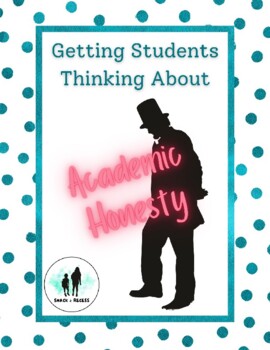Getting Students Thinking About Academic Honesty Digital Resource
- PDF
- Easel Activity
Description
This resource pairs a published article from Junior Scholastic Magazine titled, “Cheating on Trial” with a set of six questions designed to engage students in the topic of academic honesty. The article and questions can be used as whole-class primer on academic honesty at the beginning of the year, an introduction to a larger class discussion or debate, or with individual students on a case-by-case basis when reflection is needed after an incident of cheating is suspected.
The questions are scaffolded to begin with basic comprehension (the who, what, where, and when of the article). Later prompts ask literal, then inferential questions, and the resource ends with a longer—3/4 of a page—space for students to give advice to the child accused of cheating in the article.
I hope this resource makes its way into your classroom and saves you a bit of time. Please send along any feedback. I would also very much appreciate you taking the time to rate this product. I’d love any opportunity to improve this resource. Thanks!!
Updated Jan. 2022 -- Same content; updated format. This resource is now a Canva template so it is EDITABLE by the teacher and/or can be sent to students virtually to be completed with CANVA or Easel. You will receive a printable PDF as well.






